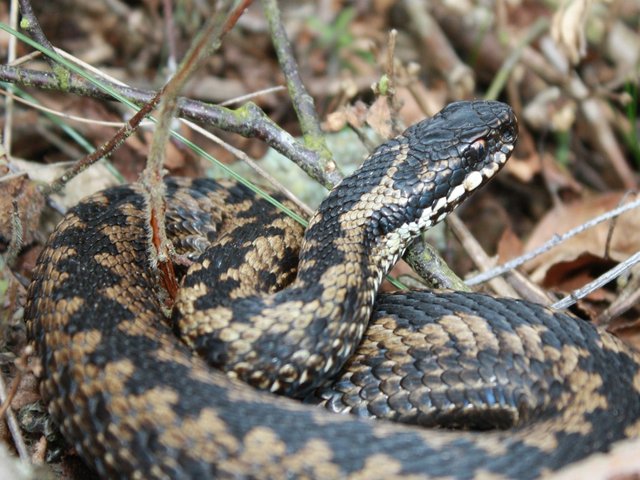Relocated Vipers Show Distinct Homing Instincts
With the massive expansion of development around the world, human infrastructure is constantly encroaching further and further into natural native habitats. As expected, this means that humans are encountering native animal species with greater frequency, and these interactions can be problematic or even dangerous based on the species involved. With these increased encounters, conservationists have enacted many different tactics to protect both native animals and the humans moving into their territory. Relocation ("mitigation translocation") has always been a popular strategy, capturing animals that are too close to humans and moving them to a new suitable habitat far from human activity. However, recent research has shown that, with many species, relocation does not appear to be as effective as once hoped. One species of viper has called into question the relocation strategy when concerning reptiles.

Meet Vipera berus, the common European adder. Like all native reptiles in the UK, the adder is protected by law, meaning that when they are found on sites set aside for development, they are generally relocated to a new habitat. While this is a common practice with reptiles (and usually only considered to be beneficial), there is little to no information on how the behavior of relocated animals compares to animals that remain where they are. Researchers Darryn Nash and Professor Richard Griffiths (Kent's Durrell Institute of Conservation and Ecology) conducted a pioneering study that tracked adders that had been relocated from a development site in Essex in 2014.

External radio tags were fitted to the vipers during their relocation. They were tracked for 10 days during the spring and summer, then their movements were compared to the resident snakes already present in the release habitat. It was immediately apparent that the relocated males demonstrated significantly greater average daily movements; in fact, ALL of them undertook long-distance, unidirectional movements, heading away from the chosen release site. Researchers even noted that one male actually returned to the original site, a trip that required passing through unsuitable short grassland habitat. This is significant, as a journey through such areas would have exposed the snake to predators.
"It is clear that moving adders due to development is not as helpful to their conservation as people think. Our research suggests the dispersal of male snakes from the release site may increase the risk of mortality of snakes that have been moved from development sites and reduces the likelihood of establishing a new population. It may be time for a new approach. Encouraging the establishment of new home ranges within the boundaries of release sites may need mechanisms to prevent dispersal immediately following release." - Griffiths, Ranging behaviour of adders (Vipera berus) translocated from a development site. Herpetological Journal, 2018; 28 (4)

This study will be critical to the future of these adders and other relocated reptiles. Many conservation tactics may be more outdated than we realize; some strategies, like relocation, have been employed for decades and to all outward appearance seem to be incredibly beneficial to all involved. However, a closer look at the lifestyles of the individuals species may reveal that some strategies may not be universally beneficial, and it may be time to rethink how we protect these species.
Article Link: https://www.sciencedaily.com/
Journal Link: https://www.thebhs.org/

Hey, good to see you are back!
Yes, relocating animals is not as easy as burocrats think. But sometimes it appears the well being of the animal is not the real motivation behind it all.
A good example is this case from Germany:
A quick overview:
Because of the conversion of a large marshalling yard into a industry park, several thousand wall lizzards needed to move. For that they turned a green meadow into a rock maze - for over $ 4 million, several thousand $ per lizzard.
But the ungrateful animals dont like the place and have spread out into the surrounding housing area and their gardens. The people dont really mind - but they could have had that for free.
Wow that was a mistake! XD
This is awesome, I hadn't seen this particular case before.
Well, I guess the contractors who got the 4 million tax payer's money didn`t mind too much. ;)
Thank you for using Resteem & Voting Bot @allaz Your post will be min. 10+ resteemed with over 13000+ followers & min. 25+ Upvote Different account (5000+ Steem Power).